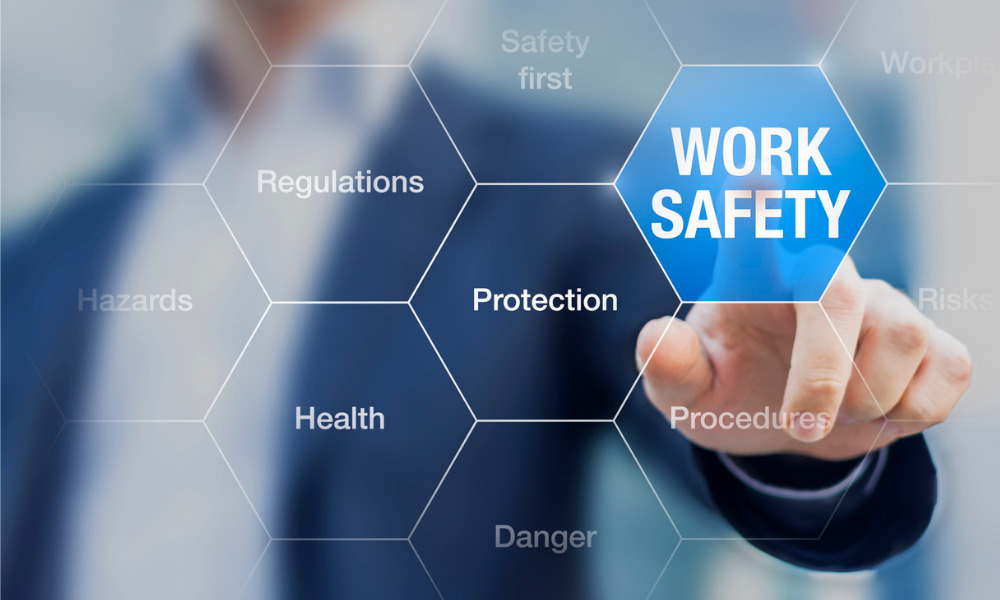How Can Workplace Safety Be Maintained Efficiently
In every work environment, the safety of employees should take precedence over cost-effective approaches or financial gain. According to the Health and Safety Executive (HSE), from 2019 to 2020, there were 1.6 million work-related illnesses and 693,000 work-related injuries in the United Kingdom, resulting in 38.8 million lost working days and an estimated cost of £16.2 billion to the economy.
Yes, these statistics are alarming, but they also highlight the indispensability of adopting a proactive approach to workplace safety. Rather than reacting to accidents and injuries after the fact, this prevents the event from happening in the first place. Maintaining this approach can go a long way in limiting the human and financial costs of workplace accidents, as well as improving employee morale and workplace productivity.
Now let’s look at some implementable methods for maintaining workplace safety and how they can benefit workers and business growth.
#1 Regular Risk Assessment
One of the most fundamental tenets of workplace safety is conducting regular risk assessments. With the help of a safety professional, this systematic assessment process can be used to identify hazards that may cause harm to workers or customers and proffer measures to counteract them. These could range from clear and obvious dangers, such as electrical wiring to fire protection procedures, to less apparent ones, like asbestos exposure or psychological abuse. Typically, a professional risk assessor would likely:
-
Consult with workers to identify the hazards and risks they face
-
Analyse the severity of each hazard
-
Suggest and implement measures to eliminate risks as far as is reasonably feasible.
-
Review and update assessment reports continuously as significant changes occur in the workplace structure and personnel.
As an employer, conducting a risk assessment benefits you as it ensures you’re in compliance with your legal duties under the Health and Safety at Work Act 1974 and the Management of Health and Safety at Work Regulations 1999. Also, it demonstrates your commitment to safeguarding your workers and clients.
#2 Personnel Education and Training
Another effective approach to maintaining workplace safety is providing safety training and education to personnel. Training and educating workers on the correct skills and attitudes necessary to perform their tasks safely can raise awareness of previously unknown workplace risks and hazards to better safeguard employees. For example, a business in the healthcare sector will opt for crisis prevention intervention training to equip staff with the relevant skills to handle difficult situations when they arise.
Training regimes should be tailored to fit the specific needs of each department and take into account factors such as:
-
Level of risk involved in the job
-
Age, competence, and experience of workers
-
Legal requirements applicable to your industry or sector
-
Availability of resources and equipment
Safety training and education should be revaluated regularly by certified trainers using appropriate methods and materials to ensure the continued effectiveness and relevance of the knowledge provided.
#3 Adopting a Safety Culture
Safety culture refers to the manner in which you address safety management in the workplace and among your workforce. It encompasses the collective beliefs, perceptions, and attitudes of employees regarding worker safety and the safety of the overall work environment. This is especially paramount if you work in a setting that presents elevated risks, like construction, aviation or manufacturing industries. For aviation, for example, improving safety can be as simple as investing in the correct ground support equipment. Without the correct equipment, safety checks can’t be carried out, but the right tools will help to keep everyone safe.
-
Fostering a positive safety culture in the workplace requires you:
-
Prioritise health and safety above other goals
-
Encourage workers to report incidents, near misses and hazards without fear of blame or reprisal
-
Include employees in decision-making and problem-solving regarding health and safety issues
-
Recognise and reward individuals with good health and safety performance records
Adopting a safety culture may manifest in the form of mandating a CSCS card for construction workers or an ECS card for site electricians. The UK’s Construction Skill Certification Scheme (CSCS) and Joint Industry Board (JIB) issue these cards to verify that individuals working on construction sites possess the appropriate qualifications and training required for their specific tasks. Starting in 2019, any professional can take an ECS or CSCS test online to meet industry-certified skill standards.
Such positive safety culture can help create a sense of shared responsibility and trust among workers and managers, enhancing their motivation and job satisfaction. Moreover, a good safety track record can only improve your organisation’s reputation, customer loyalty and competitive edge.
Conclusion
Workplace safety is not only a legal obligation but a moral duty. As such, a safe work environment is non-negotiable and should never be underestimated. By adopting proactive approaches to workplace safety, you can prevent accidents and injuries that could cause injury to you, your workers, customers or your financial standing.


